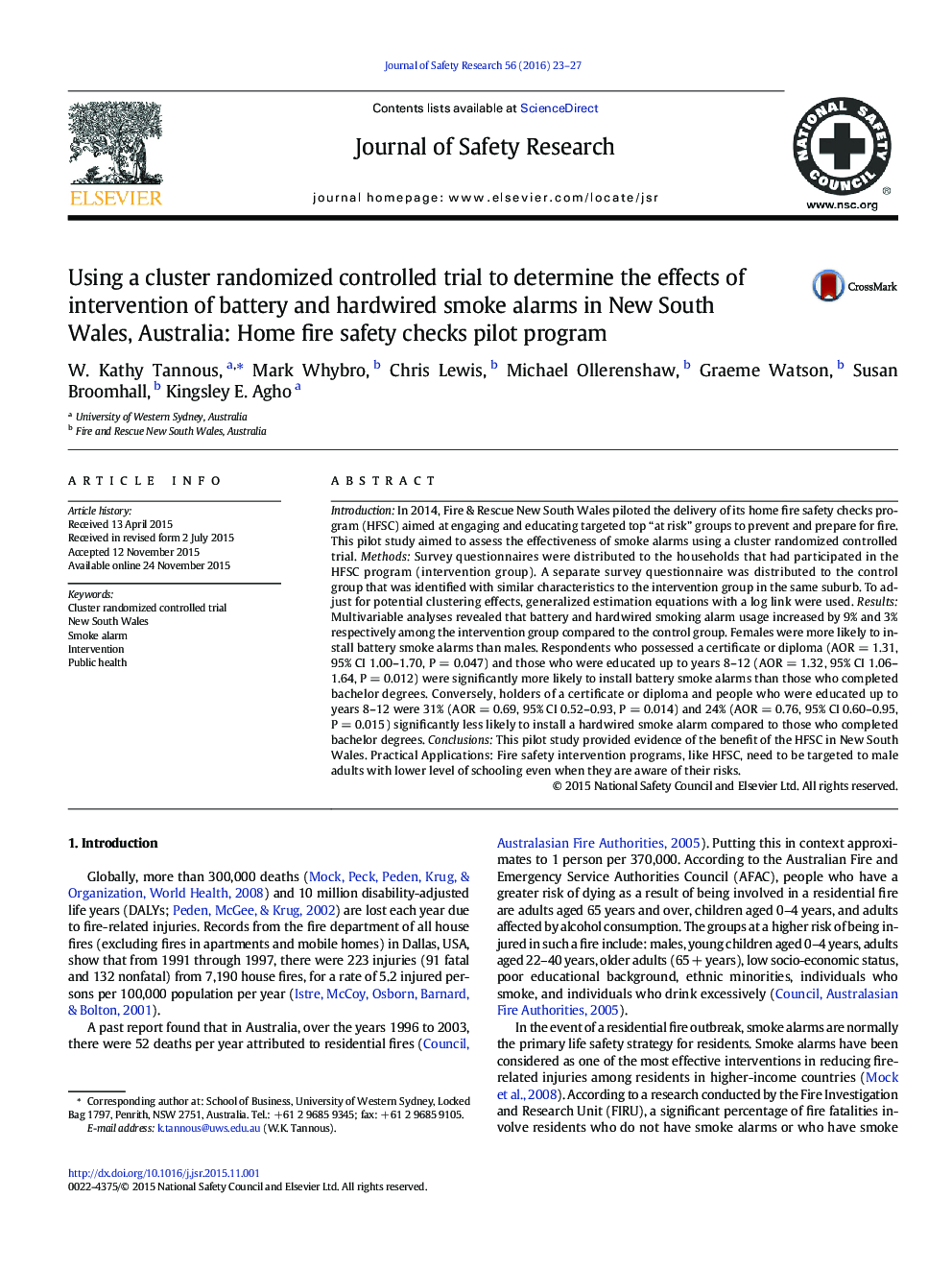| کد مقاله | کد نشریه | سال انتشار | مقاله انگلیسی | نسخه تمام متن |
|---|---|---|---|---|
| 587323 | 1453304 | 2016 | 5 صفحه PDF | دانلود رایگان |
• Assessed efficacy of pilot home fire safety checks program in New South Wales
• Used cluster randomized controlled trial to determine effectiveness of smoke alarms
• Multivariable analyses revealed smoke alarm usage increased by intervention group
• Households with trade level education were more likely to install smoke alarms
IntroductionIn 2014, Fire & Rescue New South Wales piloted the delivery of its home fire safety checks program (HFSC) aimed at engaging and educating targeted top “at risk” groups to prevent and prepare for fire. This pilot study aimed to assess the effectiveness of smoke alarms using a cluster randomized controlled trial.MethodsSurvey questionnaires were distributed to the households that had participated in the HFSC program (intervention group). A separate survey questionnaire was distributed to the control group that was identified with similar characteristics to the intervention group in the same suburb. To adjust for potential clustering effects, generalized estimation equations with a log link were used.ResultsMultivariable analyses revealed that battery and hardwired smoking alarm usage increased by 9% and 3% respectively among the intervention group compared to the control group. Females were more likely to install battery smoke alarms than males. Respondents who possessed a certificate or diploma (AOR = 1.31, 95% CI 1.00–1.70, P = 0.047) and those who were educated up to years 8–12 (AOR = 1.32, 95% CI 1.06–1.64, P = 0.012) were significantly more likely to install battery smoke alarms than those who completed bachelor degrees. Conversely, holders of a certificate or diploma and people who were educated up to years 8–12 were 31% (AOR = 0.69, 95% CI 0.52–0.93, P = 0.014) and 24% (AOR = 0.76, 95% CI 0.60–0.95, P = 0.015) significantly less likely to install a hardwired smoke alarm compared to those who completed bachelor degrees.ConclusionsThis pilot study provided evidence of the benefit of the HFSC in New South Wales. Practical Applications: Fire safety intervention programs, like HFSC, need to be targeted to male adults with lower level of schooling even when they are aware of their risks.
Journal: Journal of Safety Research - Volume 56, February 2016, Pages 23–27
